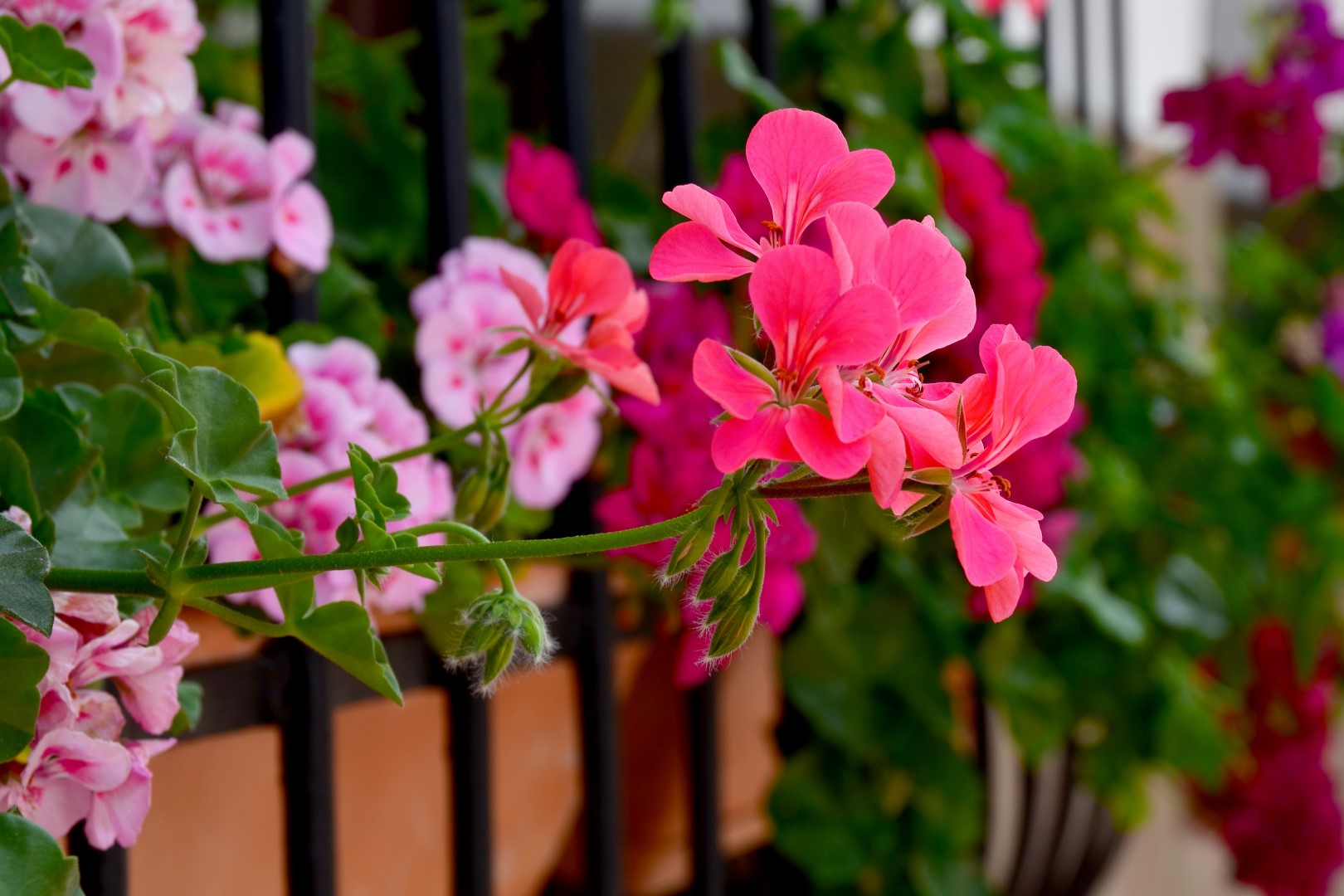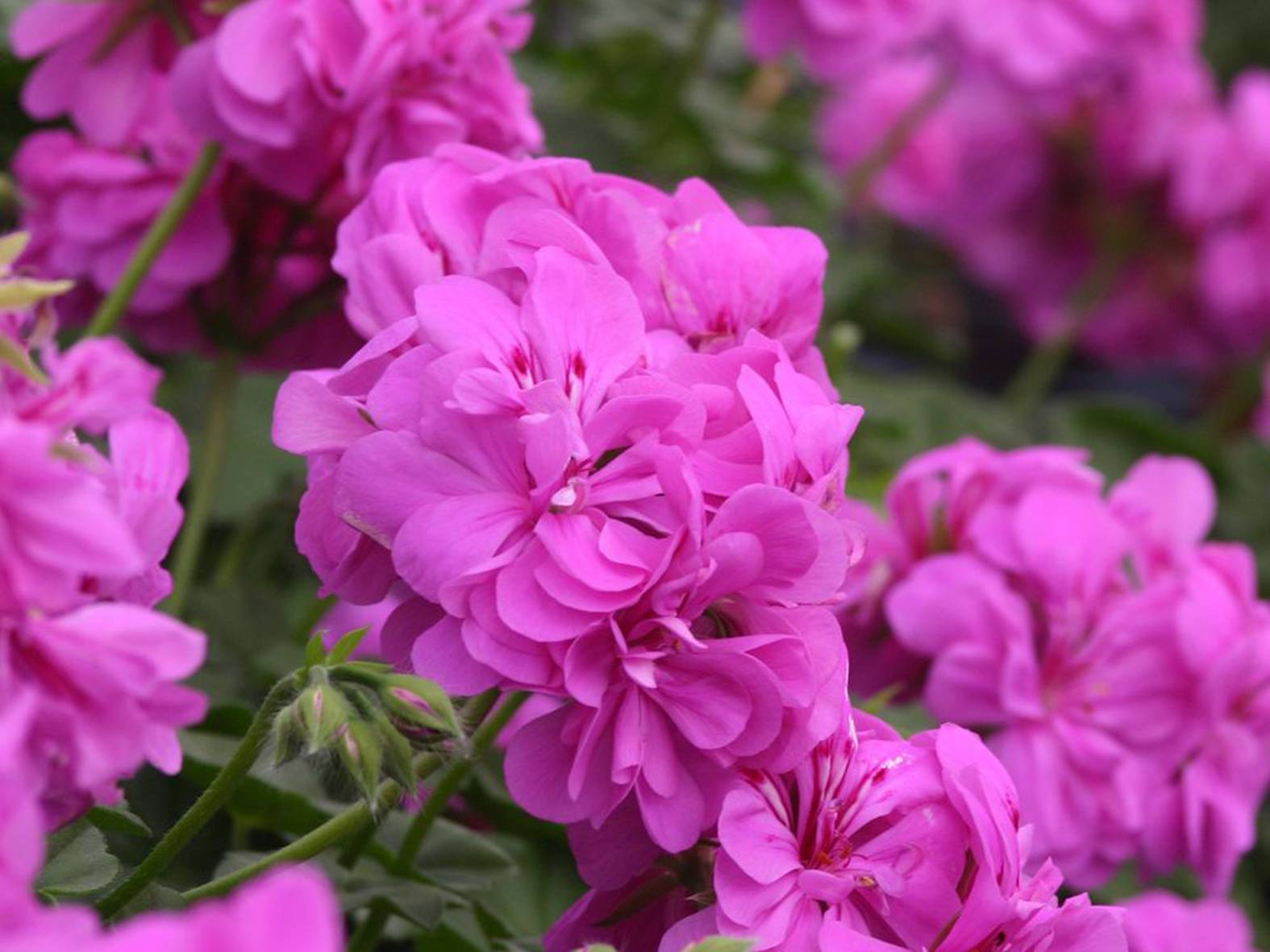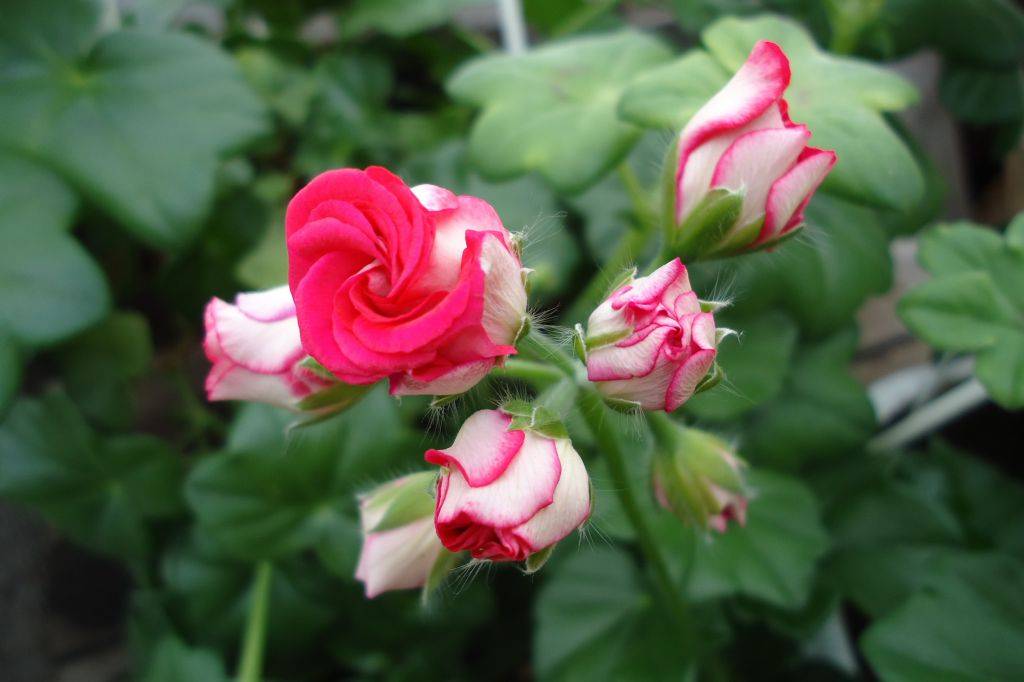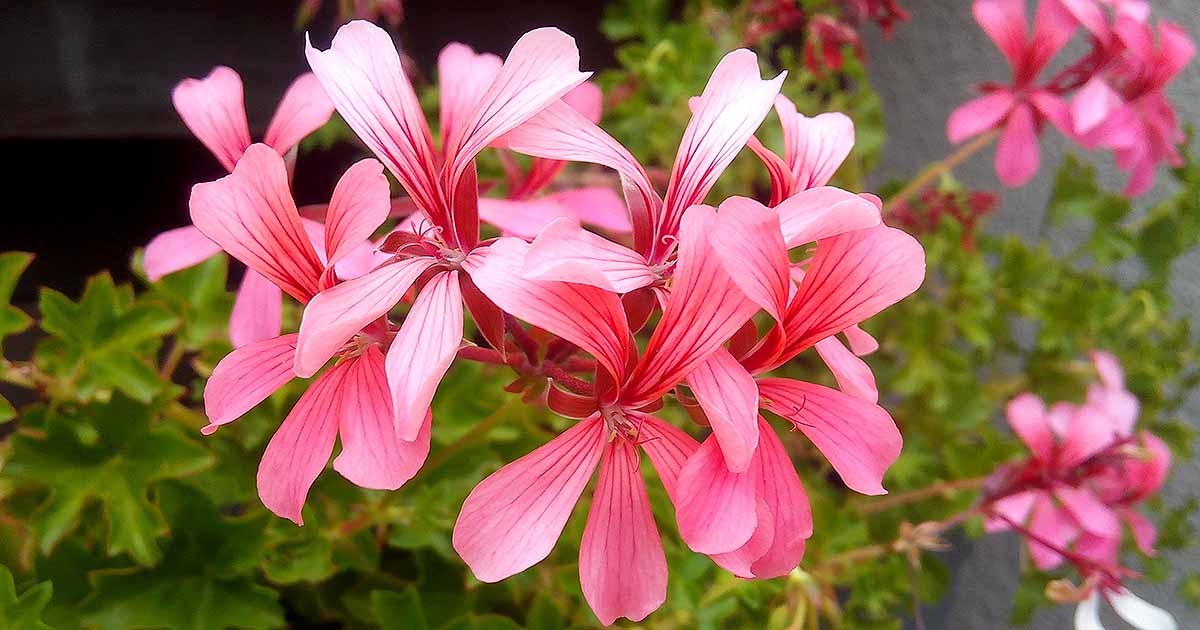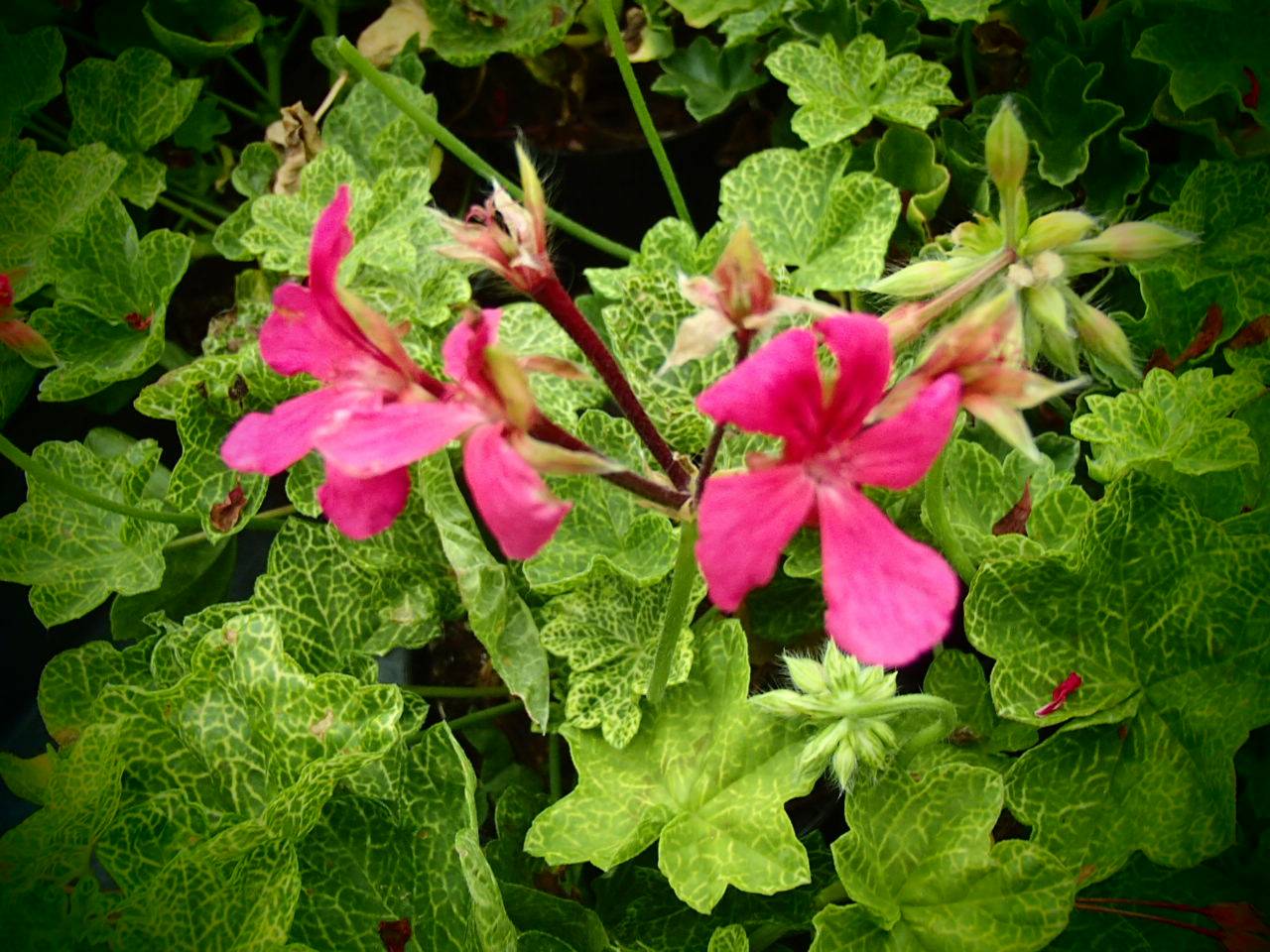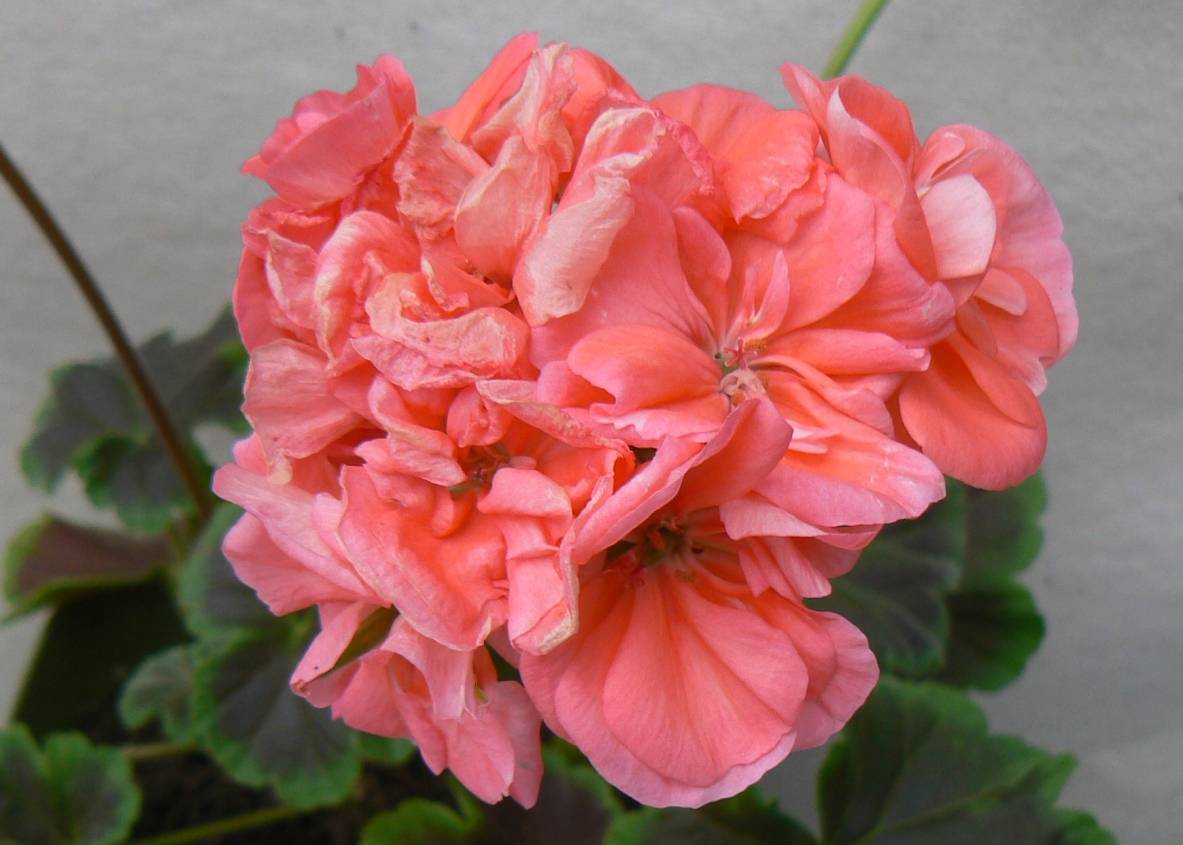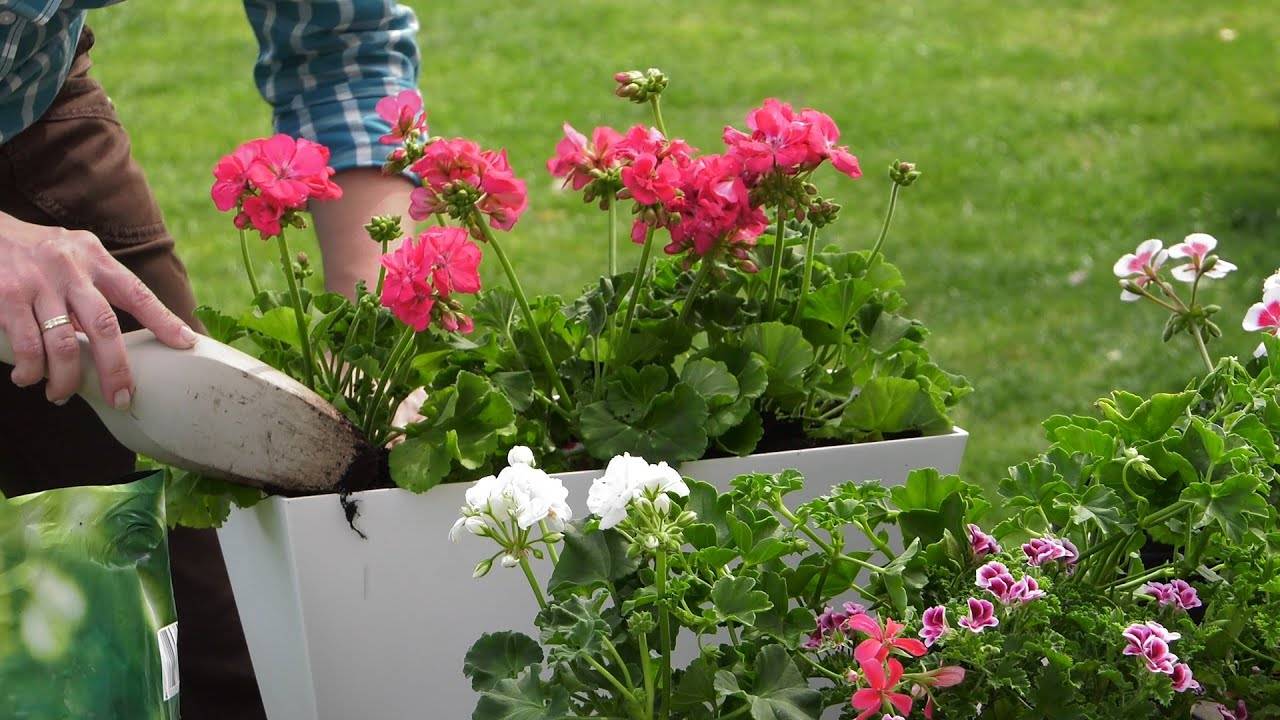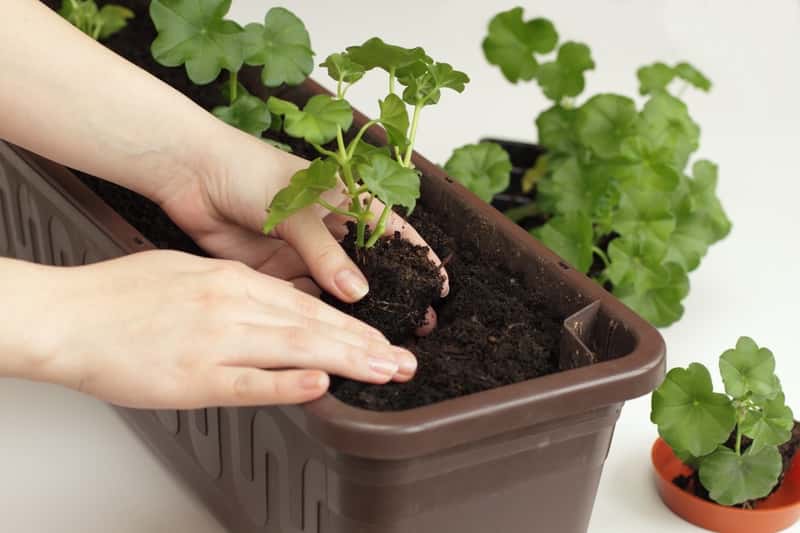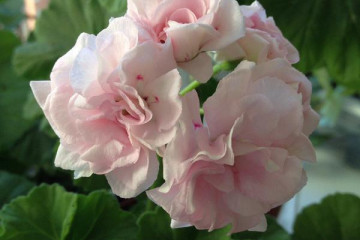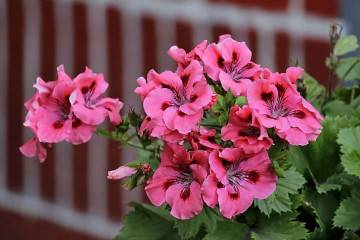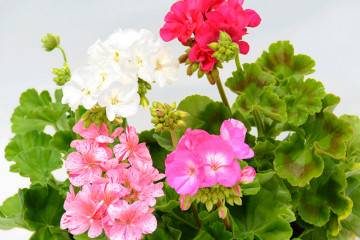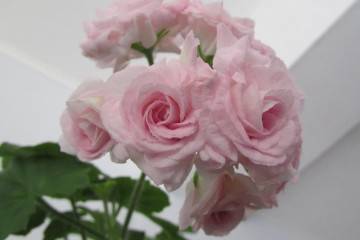Pelargonium ivy - the best varieties of geraniums
Content:
Blooming pelargonium can be seen on the windows even in winter. This flower is very popular and loved. The scientific name of the flower is pelargonium, but many ordinary people call it geranium. This houseplant has many varieties, and ampelous varieties are especially interesting. One of them is pelargonium peltatum.
Pelargonium ivy
Pelargonium ivy belongs to the Geraniev family, among ordinary flower lovers it is better known as "geranium". In some editions the name "thyroid pelargonium" is found.
The birthplace of the flower is South Africa. The name of the plant comes from the word "pelargos", which means crane in Greek. Indeed, the pistil column, which has grown in length after pollination, resembles the beak of a crane.
Description of appearance
It is a perennial plant with large leaves of rich green color and umbrellas of flowers of various shapes and colors.
Unlike other species, ivy-leaved pelargonium has creeping shoots, and the leaves do not have the pubescence characteristic of this kind. The shoots hang down as they grow and the plant takes on the appearance of an ampelous one.
Flowers are collected in inflorescences - umbrellas with long stalks. The variety of varieties of this plant implies a large number of variations in color and shape of flowers. They can be purple, white and even variegated, such as Pelargonium roulette.
Pelargonium ivy: the best varieties
There are quite a few varieties of ampelous pelargonium, but there are especially outstanding and attractive varieties. They amaze with the spectacular appearance of not only inflorescences, but also leaves.
Amethyst
The color of terry inflorescences is dominated by lilac shades. Against the background of the rich color of the leaves, delicate flowers look like a spectacular blooming waterfall.
A feature of the variety is the ability to grow rapidly.
Bernardo
The flowers of this pelargonium are very similar to small scarlet roses. The plant is a compact herbaceous bush covered with flowers.
An interesting feature is that the reverse side of the petals on the flowers is white, and the flowers themselves change their hue as they bloom.
Cascade pink
This fast growing variety has a very original flower and leaf shape. The petals of light pink flowers have characteristic dark stripes at the base. Large leaves have a glossy surface and an emerald hue.
Crocodile
A very unusual ivy variety. Care and breeding apply standard for pelargonium. The variety is remarkable for the color of its leaves. Their dark green surface is covered with multiple light streaks that form a kind of mesh.
The flowers are bright pink and rather large.
Drezden Apricot
The flowers of this variety have a very unusual coral hue. They can be semi-double or double. In combination with green leaves, they look like a contrasting and colorful cascade.
This is not the whole list of ivy pelargonium varieties. There are varieties with dark flowers and white inflorescences. The choice is so great that you can even get confused.
Pelargonium ivy - home care
In order for the flowering of pelargonium to be lush, and the leaves and shoots to be healthy, it is necessary to properly care for this flower. There are certain growing conditions and rules for caring for this plant.
| Shine | This African beauty prefers sunny windowsills, preferably facing south. When landing in open ground for the summer period, it is better to choose a place in partial shade or illuminated in the morning. |
| Temperature | In the summer, the flower feels great at a temperature of 19-23 degrees. In winter, it is better to reduce these indicators by 4-6 degrees. |
| Watering | In summer, during flowering, water should be regularly and abundantly. Care should be taken to avoid getting moisture on the leaves when watering. Excess water from the sump should be removed. |
| Humidity | Normal room conditions are fine for pelargonium. It does not need spraying, they are destructive for this flower. |
| Top dressing | During the period of active growth and flowering, fertilizing should be regularly applied. In the garden center you can buy ready-made fertilizer for pelargonium. In winter, feeding is stopped. |
| The soil | A nutritious soil is required that conducts air and moisture well. Ready-made soil containing peat and nutrients is perfect. |
| Tank size | The root system of pelargonium is very developed. The tendency to grow rapidly applies not only to the vegetative part, but also to the roots. The pot should be a few centimeters larger in diameter than the root system. |
| Pruning | To stimulate branching of shoots, the tops are pinched. This allows for greater bushiness and thickening. You also need to remove faded inflorescences to activate the formation of new ones. |
| Transfer | The plant needs regular replanting. It is necessary due to the growth of the root system and the depletion of the soil. The transplant is carried out with a complete replacement of the soil in a container with a large volume. |
Ivy geranium responds very well to planting in open ground for the summer period. Care and reproduction in such conditions remains the same as in indoor conditions. Unless it is necessary to reduce watering if rain is predicted or has passed.
Flowering features
To the inhabitants, this flower is more familiar under the name ivy-leaved geranium. The peculiarities of caring for this plant are largely due to the phases of development of this plant in different periods of time. During the period of rest and activity, the conditions of detention and the rules of care have certain characteristics.
Dormant period
Pelargonium refers to plants in which the dormant period is not particularly pronounced. It slows down growth and does not bloom, but does not completely fall into a state of rest. This period falls on winter time.
In winter, stop fertilizing and reduce watering to a minimum. It is also advisable to move the flower to a more shaded place.
Activity period
The spring-summer period is a time of active growth for pelargonium. The peak of flowering occurs at this time. Sometimes you can see flowering in winter, but this is rather an exception to the rule.
During the active phase, the plant requires a lot of strength. For this reason, pelargonium is regularly fed with fertilizers and watered abundantly before the onset of cold weather.
Types and shape of flowers
Flowers can vary greatly in flower shape and color. The color can range from bright pink to rich scarlet. Varieties with snow-white flowers are very attractive, for example White split.
In shape, flowers can be:
- simple - the petals are located in one row;
- semi-double - have 2-3 rows of petals on flowers;
- terry - the petals are densely arranged in several rows.
Reproduction methods
Dilution of pelargonium can be carried out by sowing seeds or cuttings. Both methods are applicable, but propagation by cuttings is much easier and the result will be faster.
Sowing seeds
This method can be considered relevant if there is no way to get or buy cuttings, or you need to grow a rare flower variety. Seeds are sown on the surface of the nutrient soil. Sprouts should appear in a week. Watering is necessary in moderation.
The grown seedlings dive into the pots and put them in a bright place. Further care is the same as for adult plants.
Cuttings
Pelargonium lovers know that this flower is very easy to propagate by cuttings. They take root well and practically do not get sick.
Cuttings are started in March - April. This process is step by step and consists of several stages.
- The ends of shoots with 4-5 leaves are cut into cuttings.
- The lower cut is treated with a growth stimulant and sprinkled with charcoal.
- The cuttings are planted in a box or flat pot filled with a 2/1 mixture of greenhouse soil and sand.
- During the rooting period, watering is carried out moderately and the room is regularly ventilated.
- When 4-5 new leaves appear, the seedlings dive into pots filled with a mixture made from turf, humus and sand in a ratio of 2/1/1, respectively.
Pelargonium ivy reproduces by cuttings quite simply. The survival rate of cuttings is very high and they fully inherit the entire set of qualities of the mother plant.
Growing problems, diseases and pests
Errors in the care of this plant can lead to a deterioration in the appearance of ivy pelargonium. There are two main disorders that lead to illness, and sometimes the death of a flower.
- Excessive watering. Pelargonium does not tolerate stagnant moisture. Watering is necessary only when the soil dries out. From excess moisture, diseases such as dropsy and black leg can develop.
- Wrong choice of fertilizers and their quantity. Pelargonium has a negative attitude towards excess nitrogen. It is strictly forbidden to use organics as top dressing.
A pest attack is no less dangerous than a disease attack. The likelihood of being hit by aphids, caterpillars and slugs is especially high when pelargonium is outside. If, after inspection, pests were found on the plant, spraying with an insecticide is carried out.
Pelargonium ivy is a very attractive type of geranium. This ampelous plant will decorate the house and bring new colors to the interior. With a minimal amount of time for care, you can get a spectacular flowering houseplant that pleases the eye.
